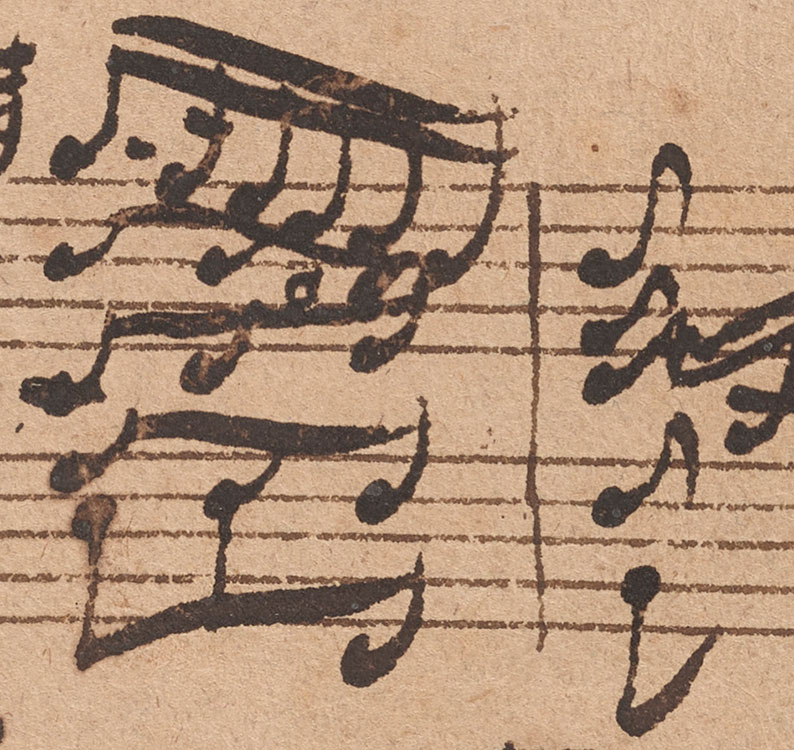Morganmobile: Correspondence
J. S. Bach worked within a Lutheran metaphysical tradition that heard religious truths reflected in music, with specific musical elements corresponding to certain theological ideas. The major chord, three sounds joined in one, was understood to manifest the Holy Trinity. Lowering the middle note of that chord one half step, to the more dissonant minor third, highlighted the human aspect of Jesus. In this way, a minor chord, like this B minor triad in an organ prelude, could remind listeners of humanity’s troubled place in the cosmos. Bach biographer Christian Wolff writes that the composer’s music “may epitomize nothing less than the difficult task of finding for himself an argument for the existence of God.”
Johann Sebastian Bach (1685–1750), Prelude and fugue for organ in B minor, BWV 544. Autograph manuscript, between 1727 and 1731. Robert Owen Lehman Collection, on deposit.
